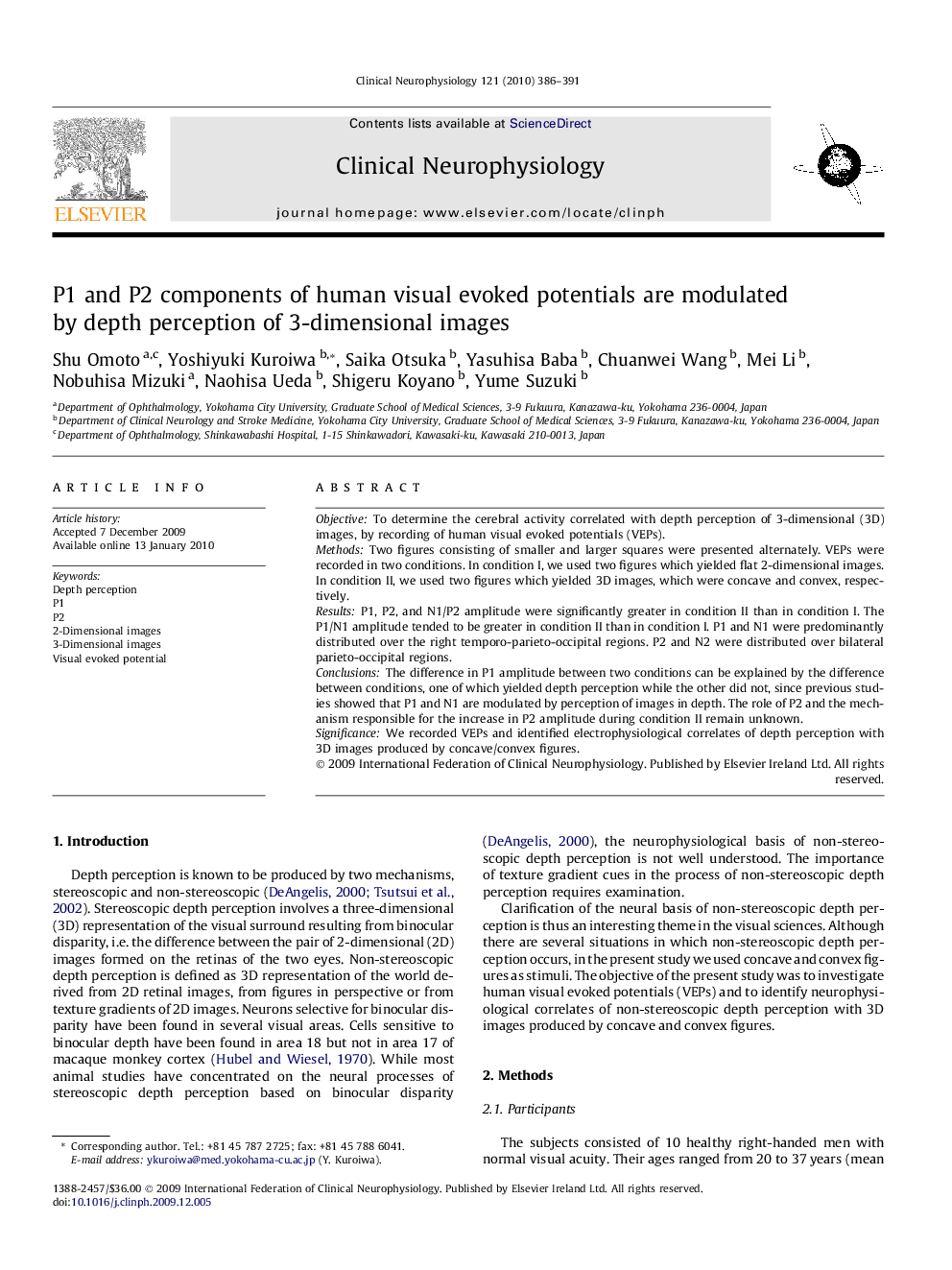| Article ID | Journal | Published Year | Pages | File Type |
|---|---|---|---|---|
| 3045155 | Clinical Neurophysiology | 2010 | 6 Pages |
ObjectiveTo determine the cerebral activity correlated with depth perception of 3-dimensional (3D) images, by recording of human visual evoked potentials (VEPs).MethodsTwo figures consisting of smaller and larger squares were presented alternately. VEPs were recorded in two conditions. In condition I, we used two figures which yielded flat 2-dimensional images. In condition II, we used two figures which yielded 3D images, which were concave and convex, respectively.ResultsP1, P2, and N1/P2 amplitude were significantly greater in condition II than in condition I. The P1/N1 amplitude tended to be greater in condition II than in condition I. P1 and N1 were predominantly distributed over the right temporo-parieto-occipital regions. P2 and N2 were distributed over bilateral parieto-occipital regions.ConclusionsThe difference in P1 amplitude between two conditions can be explained by the difference between conditions, one of which yielded depth perception while the other did not, since previous studies showed that P1 and N1 are modulated by perception of images in depth. The role of P2 and the mechanism responsible for the increase in P2 amplitude during condition II remain unknown.SignificanceWe recorded VEPs and identified electrophysiological correlates of depth perception with 3D images produced by concave/convex figures.
